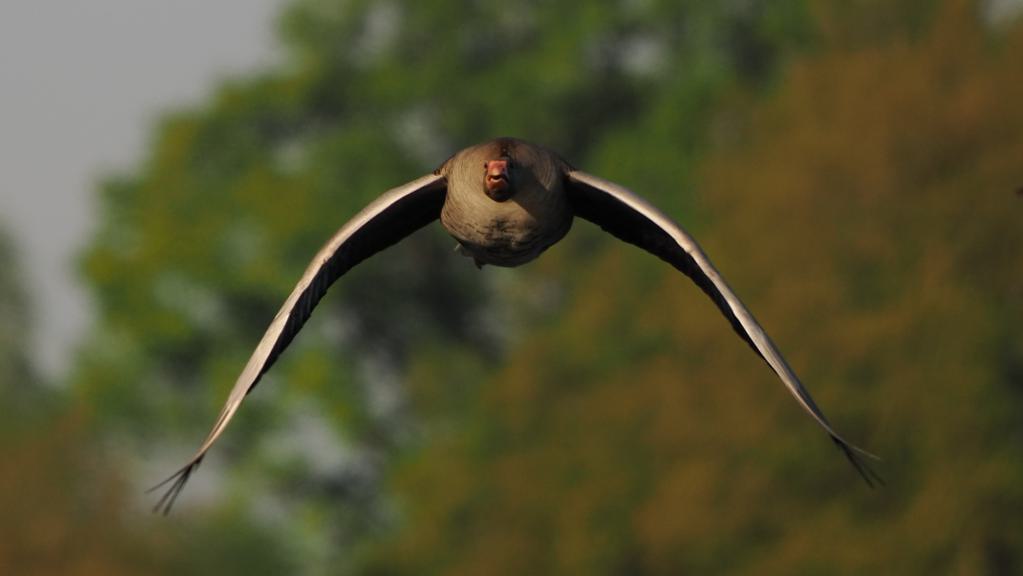
Since the end of last year, I’ve been writing that the G9II somehow has an AF problem. And I keep getting emails and comments saying “Yes, but with Pana lenses…”. I have now received a Pana 100-400 from the community. I let it loose on birds with the OM-1 and the G9II at the Rothsee. I took a few thousand photos of all kinds of birds, flying, swimming, from the side, from the front, from below, from the front.
The results were amazing:
1st place: OM-1 with FT 70-300 That’s right. The ancient 70-300 4.0-5.6, which was built by Sigma at the time. At 300mm it had a shorter reach and naturally slower AF, but the eyes were as big as soup plates: once the bird was caught, it was never let go. The image quality can easily keep up with the Panasonic and the AF hit rate is miles better: 77%. If the 100-400 is too big, too heavy and too expensive for you: take a look at the ancient lens, which can also do really good macro. (Again: the lens first needs to get close to the bird. Only then, when it has caught the bird, is it fast and reliable. Small birds that pass by in half a second don’t need to be attempted with the 70-300. But if it has time to grab the bird, then it sticks).
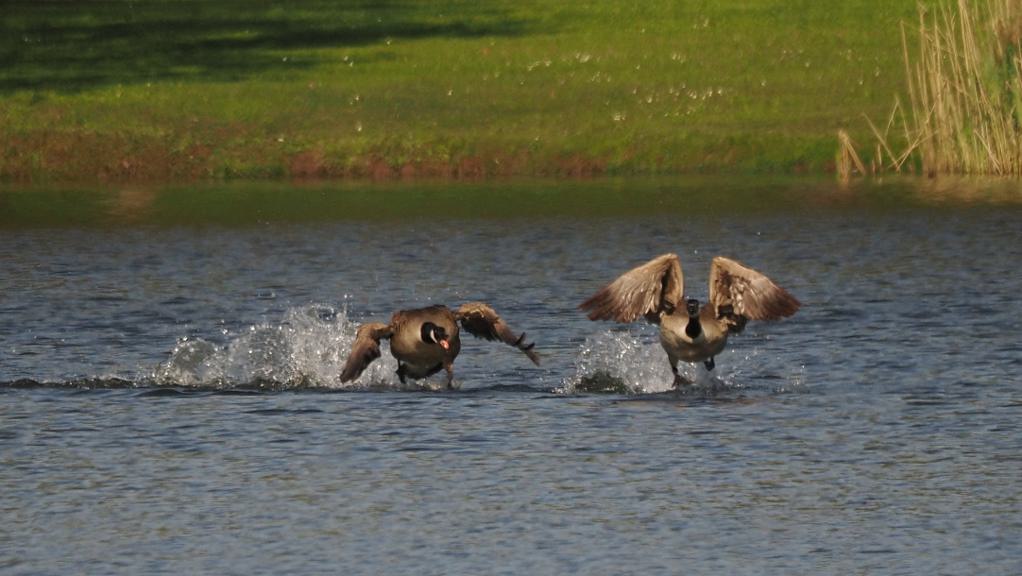
2nd place: OM-1 with Olympus 100-400. lightning-fast bird detection, even of birds 200 metres away. fast focus, reliable tracking, good sharpness. The score of actually over 80% was spoilt by a few series with inexplicable dropouts. Therefore only 67% instead of an undisputed 1st place, which I had actually assumed on site. But you shouldn’t change the evaluation criteria afterwards. But the truth is that I rated a series of a cormorant with 78%, although even the worst images were better than most of the images from the G9II. What really hit the spot was a series of a great tit in a bush. 77% out of focus. The camera had “recognised” the bird the whole time but had an inexplicable backfocus. Only when the bird flew up did the AF “wake up” again, caught the first image of the bird in the air and then the bird was simply too fast.
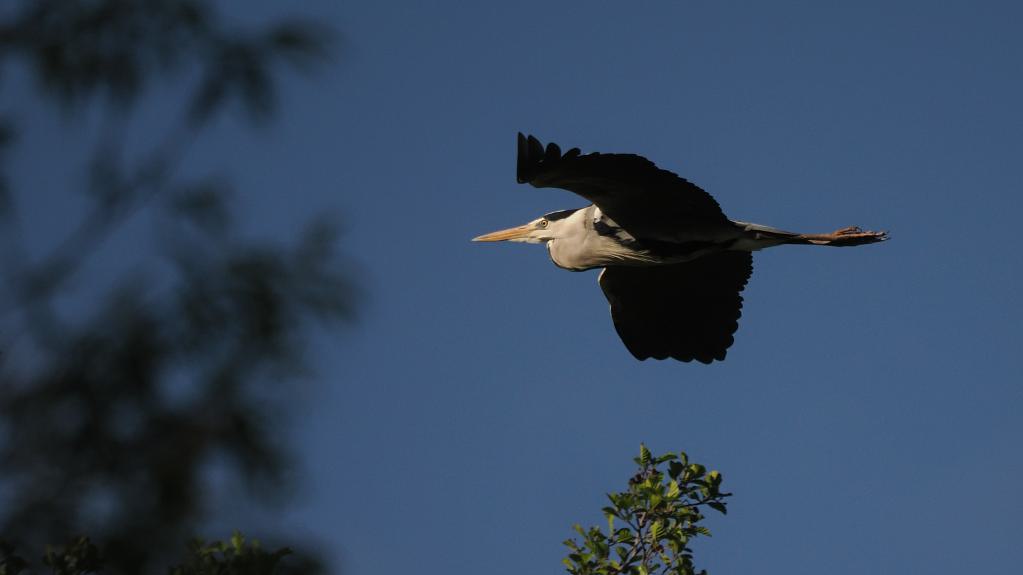
3rd place: OM-1 with Panasonic 100-400. Recognition and focus noticeably slower. distant birds are either not recognised or immediately lost, but on location the focus feels reliable. The sharpness rate in the evaluation is astonishingly low: 42% This is mainly due to the many slight backfocus shots in which the bird is almost, but not quite, in focus. You can see that the detection has worked, but the lens has not delivered with C-AF. And what is particularly striking is that the Pana delivers better results on the Oly than on the G9II.
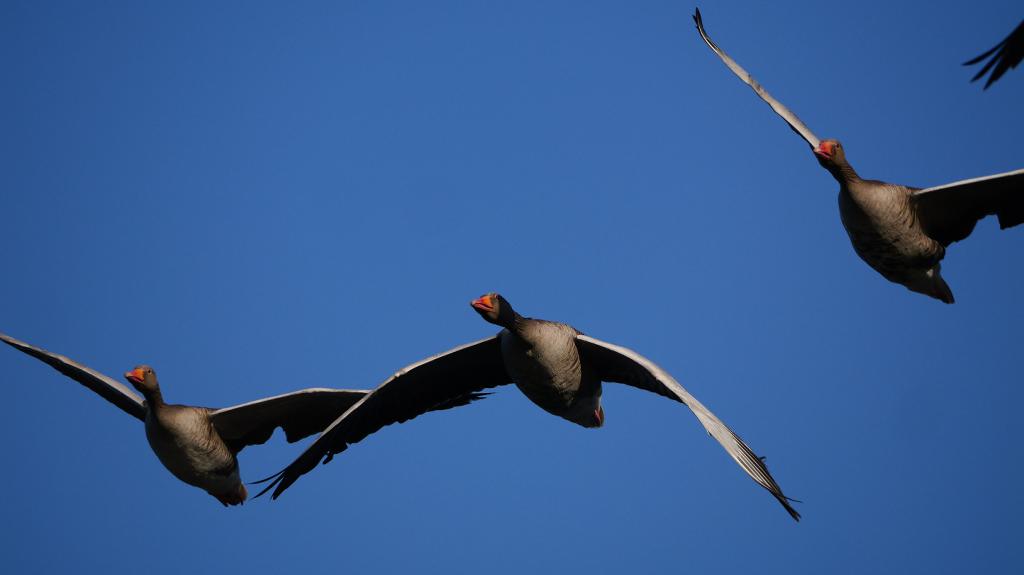
4th place: G9II with Panasonic 100-400: Despite the higher resolution of the sensor, the bird detection range is much shorter. Birds flying by are constantly lost from the detection, the time until the bird is recognised is so long that the birds are often already gone again, so I don’t have any photos of them because I don’t even press the shutter button when the images are completely out of focus. If the bird is recognised, the combination has a clear tendency to backfocus – if the depth of field is not sufficient, the bird is just out of focus. That’s quite annoying. I had 100% focus with series of large, static, small objects (trees) and birds very far away in the blue sky. (You end up with a black spot in the blue sky, but at least it’s sharp). They have raised the average a little, so that I have a hit rate of 42%. If I leave out the static objects and the fly shit in space, I’m at 36% hit rate. And – unfortunately – the lens is significantly less sharp than the m.Zuiko.
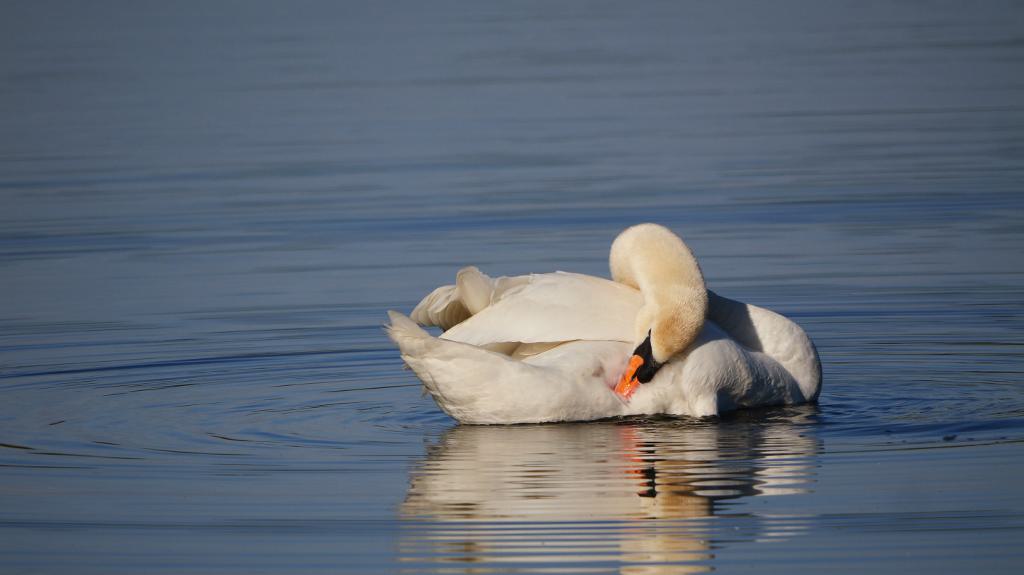
5th place: G9II with Olympus 100-400 – even worse recognition rates. Although the lens delivers better sharpness once it has hit the target, the control is significantly worse. 28% hit rate. Here, too, it feels even worse on location, simply because the object recognition doesn’t even respond. You aim and swear.
What can we say in conclusion? Panasonic slows down the Oly lens. Whether deliberately, or because they are not allowed to use the control of OMDS – is speculation. In any case, it’s clear: if you have the G9II, the Panaleica, if you have the OM-1, the Oly glass.
And yes, purely in terms of sharpness, the Sigma is ahead. But it often doesn’t hit anything – and especially not quickly. If you want at least a chance of focussing within a fraction of a second, then the m.Zuiko 100-400. It doesn’t always hit the target, but at least you have a chance.
(And again: the G9II’s snoozy SD card channel is a literal showstopper. That’s not possible. Not on a camera in this price range). What you shouldn’t forget: The G9II has a fierce rolling shutter. Fast pull-along shots with birds in front of trees are no fun. Even if you were lucky enough to get a few sharp pictures.
It’s interesting to note that many of the OM-1 vs G9II tests at the time were done with the Panasonic 100-400. When I look at my current results, with the much improved FW 1.6, then I understand how the influencers at the time came to the conclusion that the OM-1 was inferior. Because even now, the OM-1 with the Pana lens doesn’t come very close to the G9II. Hats off to Pana’s marketing. You know your products and your business.
Addition:
In the first article on AF – loyal readers will have noticed this – I had a hit rate of 84% for C-AF and continuous shooting. And now so much worse? It all depends on the light, the air turbulence and the animals – and the amount of people hanging around the Rothsee. Sunday morning at eleven is different to Tuesday morning at seven. Suddenly the birds are flying right over you – that lowers the average, but makes for great photos….
Platz 3: OM-1 mit Panasonic 150-400
Ist mir da was entgangen oder doch nur ein Tippfehler?
Da sollte ich mal mein olles 70-300 entstauben.
Wie immer: Du hast recht. Ich hab’s korrigiert.
Wieder ein toller Artikel mit wertvollen Informationen. Vielen Dank dafür!
Da können die Besitzer anderer Systeme nur neidisch sein, weil es dort bestimmt niemanden gibt, der sich auch nur halb so viel Arbeit macht, um den Nutzern die Stärken und Schwächen ihres Systems aufzuzeigen.
Es verblüfft mich so sehr das Panasonic so wenig backlash für diese krasse Influencer Kampagne zum Start der g9ii bekommt.
Die Kamera ist ja so offensichtlich und aggressiv von den ganzen Influencern beworben worden das man sofort bemerkt hat irgendwas stimmt hier nicht.
Dann kommen immer mehr wirkliche Testberichte wie dieser hier und die reale Welt sieht plötzlich ganz anders aus.
Wie immer vielen Dank für die Klasse Arbeit!
Ich bin heute schon an einem auf dem Rasen stehenden Fahrrad gescheitert. So viel Ausschuss hatte ich lange nicht.
Habe mit kleinem AF-Feld auf das Tretlagergehäuse bzw. den vorderen Zahnkranz gezielt und scharf sind die Gänseblümchen dahinter.
Ich probiere es morgen nochmal mit dem “Motorcycle”-AF – vielleicht taugt der ja auch für Fahrräder.
Vielleicht ist die Trefferquote höher, wenn man auf etwas vor dem Objekt fokussiert, das man scharf haben möchte.
Das Objektiv war das 2.8-4.0/12-60mm.
…oder hätte ich auf AF-ON Near stellen sollen?
Bei der G9II gibt es AF-ON, AF-ON Near und AF-ON-Far … habe mich damit noch nicht beschäftigt.
Hätte Dir nichts geholfen. Der “AF Nahbereich” für die AF-ON-Taste sorgt dafür, dass Du beispielsweise eine Blume vor einem weit entfernten Wald scharf stellen kannst, ohne dass der Wald scharf wird. Das funktioniert. Aber sobald die Abstände nicht so krass sind, also Blume vor Gras oder eben Fahrradteile vor Gras ist der AF ein Glücksspiel. Der kennt nämlich kein sauberes Nearest is best. Der nimmt, was er als bessere Kontrastkante findet. (Olympus wurstelt jetzt seit zehn Jahren rum, um die Kombi Phasen-AF/Kontrast-AF mit mFT und FT-Objektiven zum Laufen zu bringen. Langsam kriegen sie es gut hin. Panasonic fängt damit erst an. Weil sie es nicht können, haben sie ein Dutzend Parameter ins Menü gepackt und sich gesagt “Soll sich der Fotograf raussuchen, was er braucht.” Und Motiverkennung. Bei Motiverkennung muss man sich nicht um die Abstimmung eines Hybrid-AF kümmern. Eventuell ist das der Grund, warum die anderen Hersteller alle so auf Motiverkennung abfahren. Ist natürlich auch ein Ansatz, Optionen in die Kamera zu packen, deren Funktion nirgends zu beschreiben und wenn der Fotograf dann unscharfe Bilder hat, “Mann bist Du doof, Du musst ganz einfach die Option blabla einschalten.” Die AF-On-Nahbereich-Nummer ist auf Seite 157 erwähnt und dort findet sich ein Hinweis “Siehe Seite 534”. Und dort steht, man solle auf Seite 154 nachkucken, wo nur eben die Existenz der Taste erwähnt wird. Was die Funktion genau macht – Tschooooo…. Dass alle über das Menü der Olys schimpfen, aber niemand über die Unbedienbarkeit der Panas – ich sach ja, das Marketing von Panasonic ist genial.)
Danke für die Info.
Ja genau, es passiert, wenn die Abstände nicht so krass sind, d.h. der Schärfe-Unschärfe-Unterschied auch nicht so groß ist. Am Kamerabildschirm erkennt man es nicht gleich (sonst würde man die Aufnahme direkt wiederholen) und das große Staunen und die Suche nach dem, was jetzt eigentlich scharf ist, beginnt dann am Monitor.
Da der Schärfeunterschied nicht so groß ist, kann man die Fotos für banale Dinge wie Kleinanzeigen in geringer Auflösung sogar noch verwenden.
Bei einer einmaligen Angelegenheit wie einer Hochzeit ist das fatal; Brautpaar unscharf, Trauzeugen im Hintergrund scharf.
Im Handbuch der G9II gibt es ein Kapitel “Verwenden von AF”. Auf 43 Seiten wird das Grundsätzliche erklärt – oder besser: erwähnt. “Motivbewegungs-Prognose” finde ich vom Wort her schon gelungen.
Diese Motiverkennungen habe ich bisher nie benutzt – vielleicht sollte ich mir das angewöhnen. Am Besten, wenn es eine smarte “AI-Motiverkennung” ist, die aufgrund der Informationen meiner Google-Datenspur sowieso besser weiß was ich fotografieren möchte, als ich selbst.
Ich suche noch einen Weg damit umzugehen. Und vielleicht gibt es ja nochmal ein FW-Update, was diese merkwürdige Eigenschaften etwas reduziert.
Irgendwie ist das ein allgemeiner Techniktrend: Die Implementierung von softwarebasiertem Firlefanz und bei den Grundfunktionen wird es dann holprig.
Ich hatte jetzt endlich auch mal Zeit mit FW 1.6 und dem Oly 100-400 in der Natur zu fotografieren. Unterschied wie Tag und Nacht zu vorher. Vogelerkennung top und schnell. Auch Tendenz zum Backfocus, wenn der Piepmatz regungslos sitzt, mit etwas Gestrüpp drumrum.
moin,
Ich bevorzuge eigentlich BOP ( bird on plate) statt bif, aber im Urlaub versuche ich es auch gelegentlich mit vogelfotografie, meist raubvögel am Himmel oder vor Wald. Ich verwende dann das 75-300, bisher ohne motiverkennung, nur afc.
Wie schneidet das eurer Erfahrung nach in bezug auf die Ausbeute an scharfen Bildern im Vergleich zum 100-400 oder dem neuen 150-600 ab ?
danke und Grüße
Tom
Zum Thema Augenautofokus: Auch die Lumix S5-II, die ja weitgehend identisch zur G9-II ist, fokussiert auf das falsche (hintere) Auge. Man hat auch keine Chance, ihr das andere Auge anzubieten. Daher muss man auf den Punktfokus gehen.
Habe mir die Bilder nochmal angesehen, es ist in zwei Fällen passiert: Einmal hatte das Mädchen tatsächlich unterschiedlich große Augen, und zufällig war das hintere dann etwas größer als das vordere. Und bei der anderen war das vordere Auge durch eine Haarsträhne leicht überdeckt, allerdings nur in der Ecke, die Iris ist frei.
Der Algorithmus scheint also stur nach Größe und Erkennbarkeit zu gehen, der Abstand zur Kamera wird nicht beachtet.
Das kannte ich von den Olympus M1-II und III anders. Wenn man da die Automatik “vorderes Auge” eingestellt hatte, hat die Kamera das vordere Auge genommen.